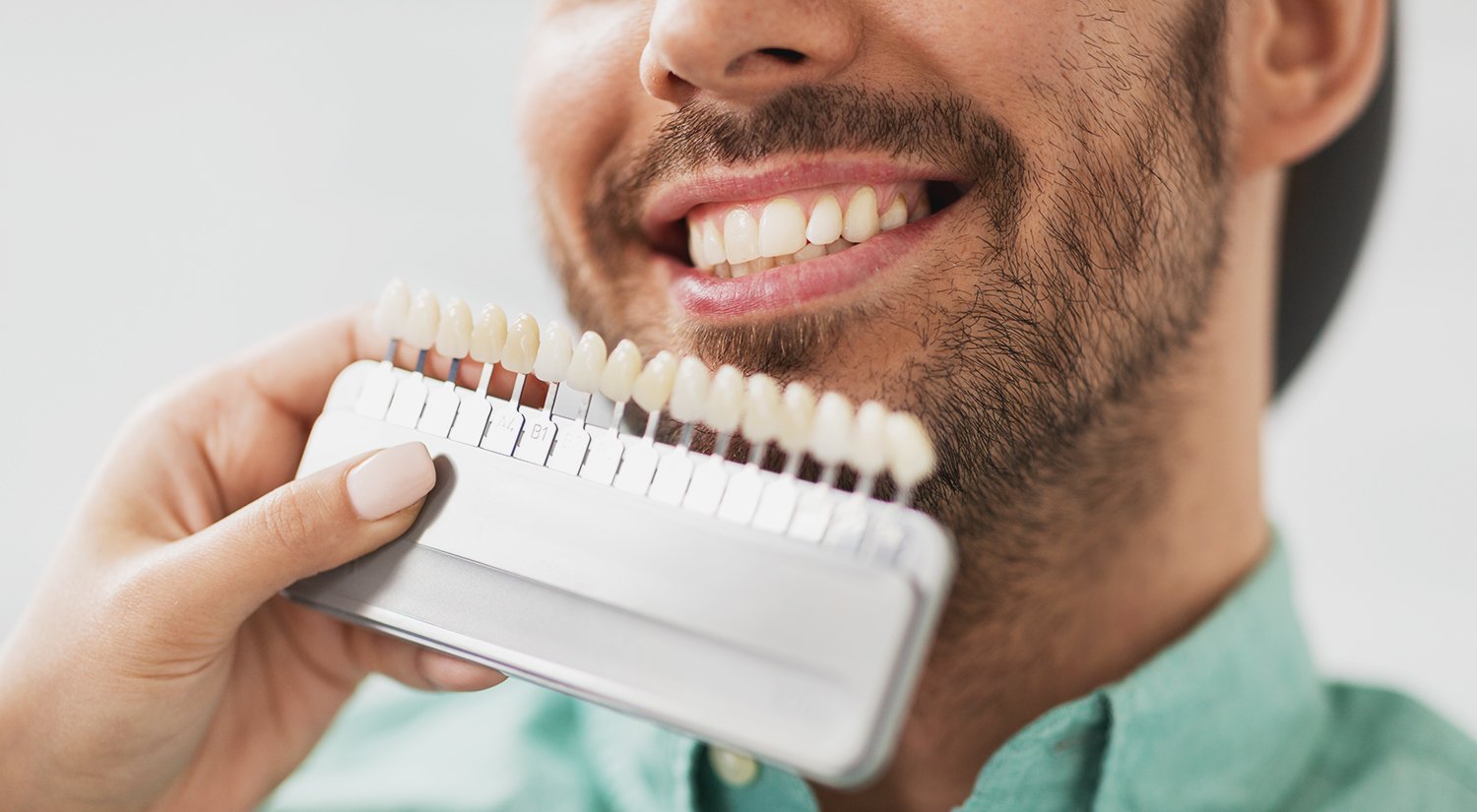Dental veneers are very thin shells for a tooth in the shape of a cap, made individually for the patient. They are usually made of porcelain or composite resin. Veneers are attached to the front part of the tooth with a special adhesive. Their primary purpose is to improve the aesthetic appearance of discolored, chipped or misaligned teeth.
Equally effective veneers can be used to close gaps between the patient’s teeth, as well as to change the size or shape of teeth. Veneers today are a very popular option for cosmetic dentistry, which can create a beautiful and natural-looking smile in a fairly short period of time.
In brief, veneers have the following undeniable benefits:
- Improved aesthetics of the patient’s smile. Veneers significantly improve the appearance of the smile by masking stains, chips or irregularities in the shape of teeth.
- Longer-lasting. If cared for properly, veneers can last for 10-15 years.
- Permanent colour and shape. Veneers do not darken or discolour over time. This means that the whiteness of your smile will no longer be affected by bad habits or food.
- Protecting your teeth from harsh environments. As mentioned above, veneers are shaped like a cap that is placed on the tooth and serves as a barrier that protects the tooth from fluctuations in temperature or sugars and acids.
- Not visible on the teeth. Only your dentist will know that they are not your real teeth, because you can’t tell the difference between veneers and real teeth.
Although the veneers installation has many unquestionable advantages, there are also disadvantages, which you should be aware of before deciding to undergo the procedure.
![Dental Veneers Pros and Cons - [ Images & Videsos ]](https://www.vuedentalkyle.com/blog/wp-content/uploads/2020/02/Dental-Veneers-Pros-and-Cons.png)
The disadvantages of veneers are:
- The cost of veneers. The rather high cost, especially when it comes to highly aesthetic veneers, may well deter you.
- The irreversibility of the placement process. Because the tooth is ground down before veneers are applied, the process is irreversible. That is, in the future, if the problem occurs, the veneer cannot be simply removed, and if damaged, a new veneer must be placed in its place.
- Tooth deformation. In order to place a veneer, a specific shape must be given to the tooth, which is achieved by reducing the enamel surface of the tooth.
- Not a universal solution. Although there are some cases in which it is even possible to correct a bite with veneers, they have a long list of requirements for application and will not be suitable for every patient.
- Chipping possibility: Although veneers are durable, they may still chip or break if the teeth are subjected to excessive force, such as grinding or clenching.
Overall, veneers can be a great option for patients who want to improve the appearance of their teeth, but they should carefully weigh the advantages and disadvantages before deciding to undergo the procedure.















